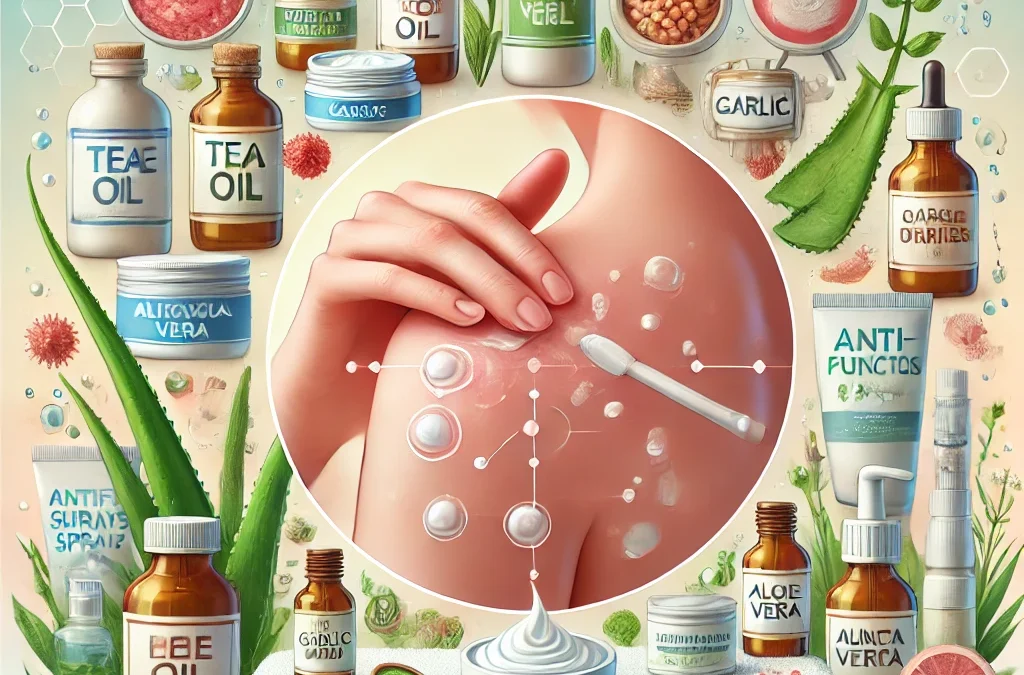Skin Health: How to Get Rid of Stubborn Rashes and Fungal Infections
Your skin is your body’s largest organ and acts as a protective barrier against the external environment. However, it’s also susceptible to various issues like rashes and fungal infections, which can be uncomfortable and persistent. Proper skin care and targeted treatment are crucial for maintaining healthy, rash-free skin. This article explores the causes of stubborn skin rashes and fungal infections, prevention tips, and effective remedies to help restore your skin to optimal health.
Understanding Skin Rashes and Fungal Infections
What Causes Skin Rashes?
Skin rashes are areas of irritated or inflamed skin that may appear red, itchy, swollen, or scaly. Common causes include:
- Allergic Reactions: Triggers like pollen, certain foods, and skincare products.
- Contact Dermatitis: Irritation caused by direct contact with substances like detergents or metals.
- Heat Rash: Sweat trapped in pores during hot, humid conditions.
- Eczema or Psoriasis: Chronic skin conditions that cause inflammation and redness.
- Infections: Bacterial, viral, or fungal infections can lead to rashes.
What Are Fungal Infections?
Fungal infections occur when fungi overgrow in warm, moist areas of the body. Common types include:
- Athlete’s Foot (Tinea Pedis): Affects the feet and causes peeling, cracking, and itching.
- Ringworm (Tinea Corporis): Appears as a red, circular rash with clearer skin in the middle.
- Jock Itch (Tinea Cruris): Affects the groin area, causing redness, itching, and scaling.
- Yeast Infections (Candida): Often affect folds of skin, such as under the breasts or around the groin.
How to Get Rid of Stubborn Rashes
1. Identify the Trigger
- Keep a diary to track potential irritants or allergens causing your rash.
- If you suspect an allergic reaction, consult a dermatologist for allergy testing.
2. Use Anti-Itch Creams
- Over-the-counter (OTC) hydrocortisone creams can reduce redness, swelling, and itching.
- For severe rashes, prescription-strength steroids may be necessary.
3. Moisturize Regularly
- Use a fragrance-free, hypoallergenic moisturizer to soothe irritated skin.
- Look for products with ceramides or colloidal oatmeal, which help restore the skin barrier.
4. Avoid Scratching
- Scratching worsens inflammation and increases the risk of infection. Keep nails trimmed and consider wearing gloves at night if scratching is a problem.
5. Apply Cool Compresses
- Soak a clean cloth in cold water and place it on the rash for 10-15 minutes to reduce itching and inflammation.
6. Opt for Gentle Skincare Products
- Use unscented soaps and cleansers designed for sensitive skin.
- Avoid harsh scrubs, which can exacerbate rashes.
How to Treat Fungal Infections
1. Use Antifungal Medications
- OTC antifungal creams: Products containing clotrimazole, miconazole, or terbinafine are effective against most fungal infections.
- Prescription medications: For stubborn cases, oral antifungals like fluconazole or itraconazole may be prescribed.
2. Keep the Area Dry
- Fungi thrive in moist environments. After bathing, thoroughly dry areas prone to fungal infections, such as between the toes or under skin folds.
3. Wear Breathable Clothing
- Choose loose, cotton clothing to prevent excessive sweating.
- Avoid synthetic fabrics that trap moisture.
4. Maintain Good Hygiene
- Wash the affected area with mild soap and water daily.
- Use a separate towel for the infected area to prevent spreading the fungus.
5. Avoid Sharing Personal Items
- Do not share towels, shoes, or grooming tools with others to reduce the risk of spreading the infection.
6. Try Natural Remedies (as supplemental treatments):
- Tea Tree Oil: Has antifungal properties. Dilute with a carrier oil and apply to the affected area.
- Apple Cider Vinegar: Mix equal parts with water and use as a topical rinse to inhibit fungal growth.
- Garlic: Contains allicin, an antifungal compound. Crush garlic and mix with a carrier oil to apply to the skin.
Preventing Skin Rashes and Fungal Infections
- Maintain Proper Skin Care:
- Cleanse your skin daily and moisturize to prevent dryness and cracking, which can allow irritants or fungi to enter.
- Exfoliate gently to remove dead skin cells, but avoid overdoing it.
- Practice Personal Hygiene:
- Wash your hands frequently.
- Wear clean, breathable socks and change them daily to avoid moisture buildup.
- Manage Allergens and Irritants:
- Use hypoallergenic detergents and avoid harsh chemicals in skincare products.
- Opt for jewelry made of nickel-free or hypoallergenic materials.
- Boost Your Immune System:
- Eat a balanced diet rich in fruits, vegetables, and probiotics to strengthen your body’s natural defenses.
- Stay hydrated and get adequate sleep to support overall health.
- Use Antifungal Powders:
- Apply antifungal powder to areas prone to sweating, like the feet and groin, to prevent fungal growth.
When to See a Doctor
While most rashes and fungal infections can be treated with home remedies and OTC products, consult a healthcare professional if:
- The rash or infection worsens or doesn’t improve after 2 weeks of treatment.
- You experience severe itching, pain, or swelling.
- The rash is accompanied by fever, pus, or discharge, which may indicate an infection.
- You have underlying health conditions (e.g., diabetes or a weakened immune system) that complicate treatment.
Conclusion
Skin health is a critical aspect of overall wellness. By identifying triggers, using targeted treatments, and practicing good hygiene, you can effectively manage and prevent stubborn rashes and fungal infections. Remember to consult a healthcare provider for persistent or severe cases to ensure the best care for your skin. With consistent care and attention, you can restore your skin’s health and confidence in no time.





Recent Comments